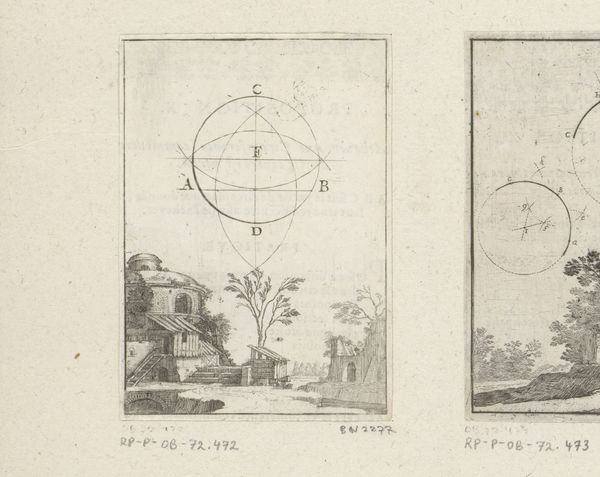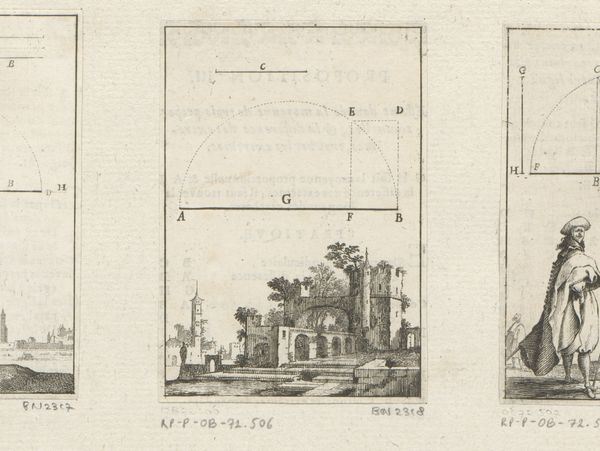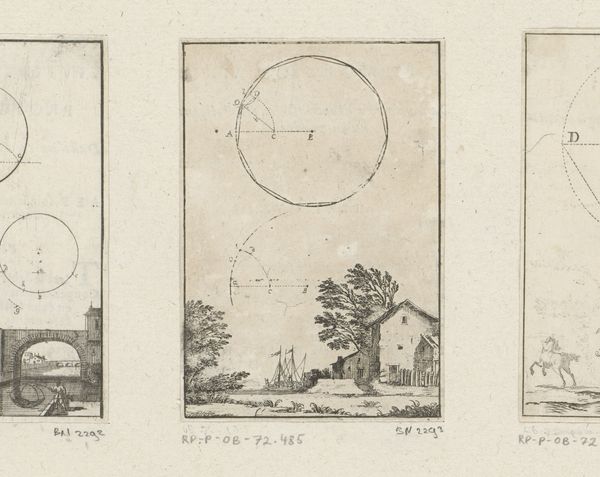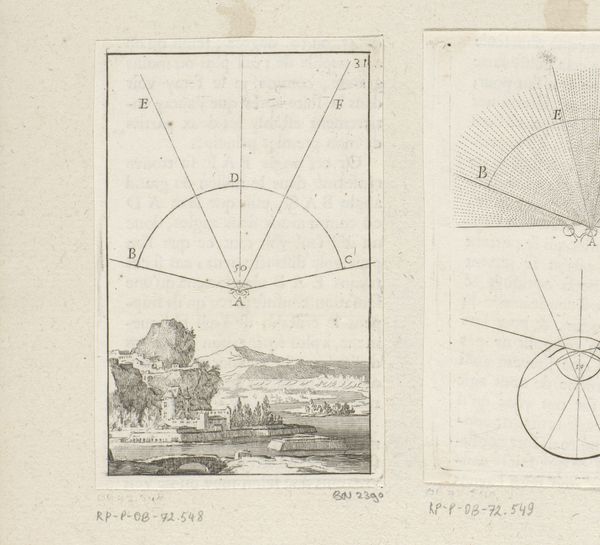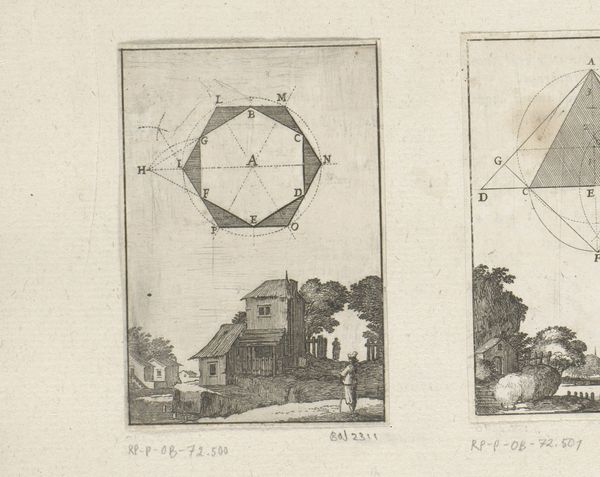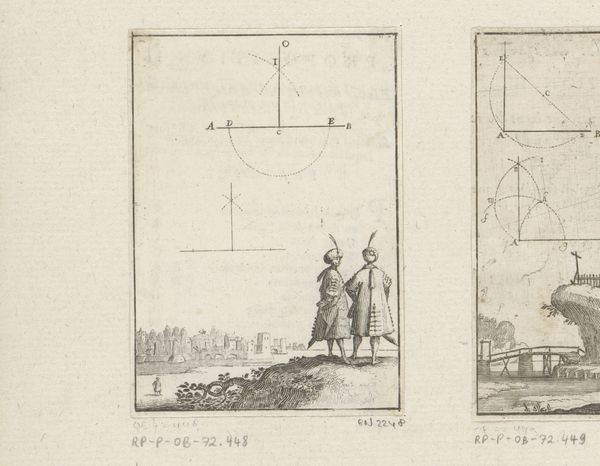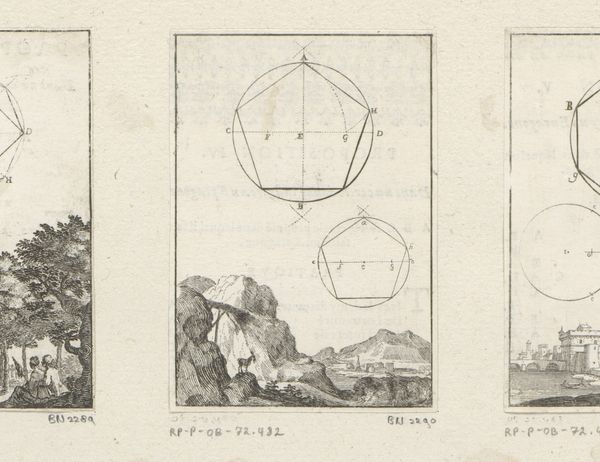
print, engraving
#
pencil drawn
#
aged paper
#
light pencil work
#
baroque
# print
#
pencil sketch
#
old engraving style
#
sketch book
#
landscape
#
personal sketchbook
#
pen-ink sketch
#
sketchbook drawing
#
cityscape
#
pencil work
#
engraving
Dimensions: height 92 mm, width 62 mm
Copyright: Rijks Museum: Open Domain
Curator: Looking at this etching from 1669 by Sébastien Leclerc I, titled "Circle and Straight Line with a View of a Ruin Below", I'm immediately struck by its dual nature, a geometric diagram presiding over a crumbling landscape. Editor: My eye is drawn to the ruins below. The detail in the architectural decay contrasts beautifully with the crisp lines of the geometric figures above. It evokes a certain melancholy, a reflection on time and impermanence. Curator: Leclerc was known for his skill in depicting both scientific precision and the baroque aesthetic. Notice how he combines mathematical illustration with landscape—a common practice when perspective and accurate representation were coming into their own. Editor: I see this blending of science and decay not just as technical illustration, but almost like an emblem of intellectual humility. The diagram seeks to measure and understand, while the ruin embodies the limits of that ambition. Civilizations rise and fall, mathematical truths remain but they too fade in cultural relevance... Curator: Indeed. The inclusion of figures adds a humanist element. Perhaps, those two small figures invite us to contemplate humanity's small place in grand, mathematical, and historical frameworks? How our ambition for order contends with the realities of chaos and entropy. Editor: Looking at it again, I see that tension so vividly. The architecture in decline tells stories of human failure and triumph. It serves to be interpreted by later observers; this scene is more than just a document, it carries layers of symbolism about the limits of both our constructions and our knowledge. The aged paper almost lends it a sacred, historical depth too, adding another voice to it. Curator: Absolutely. It's a beautiful piece showcasing Leclerc’s ability to engage with contemporary scientific interests through art, reminding us of the interplay between rationalism and emotional observation in the 17th century. Editor: Yes. For me, it is a reminder that we still, centuries later, wrestle with these concepts, trying to build new temples upon forgotten ruins. Thank you for these added thoughts.
Comments
No comments
Be the first to comment and join the conversation on the ultimate creative platform.
